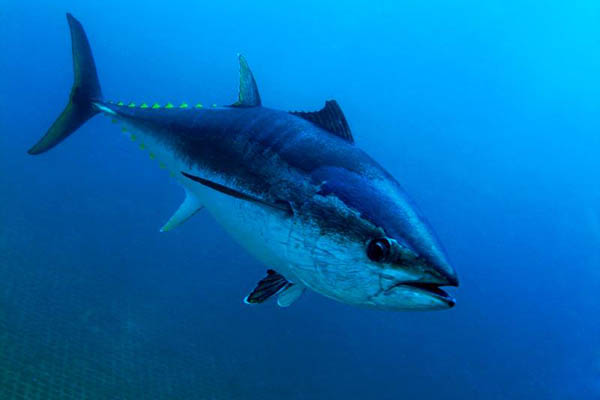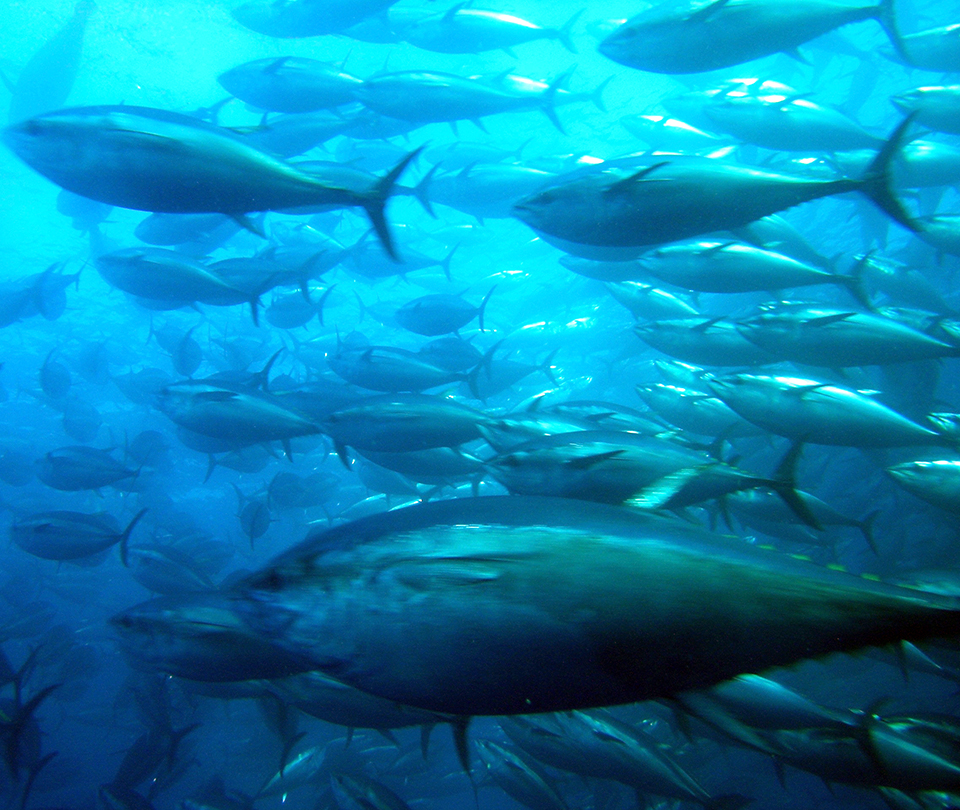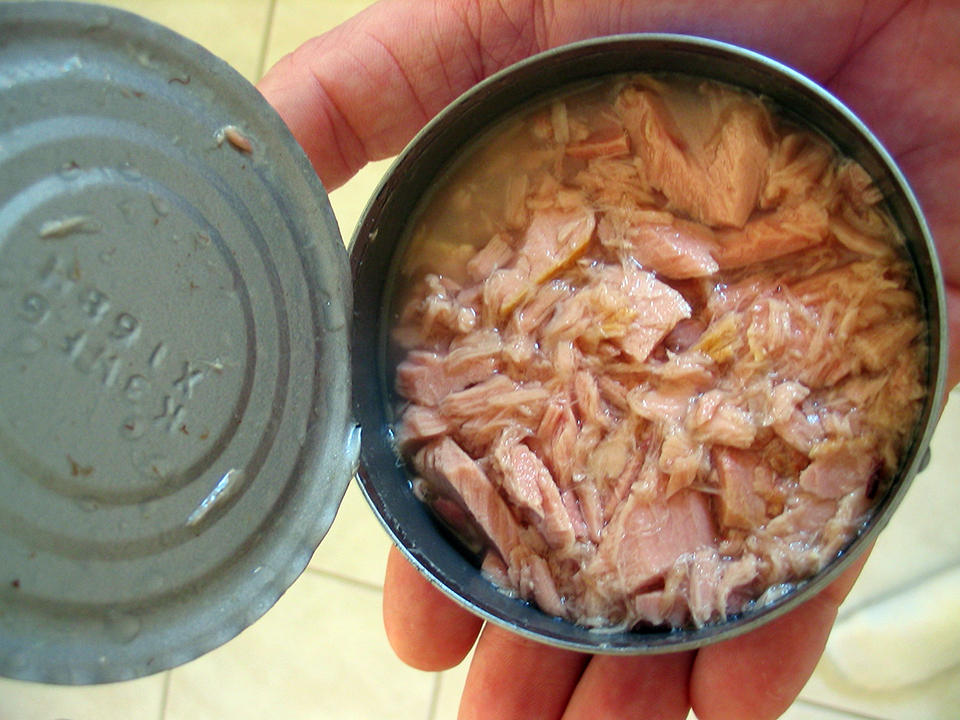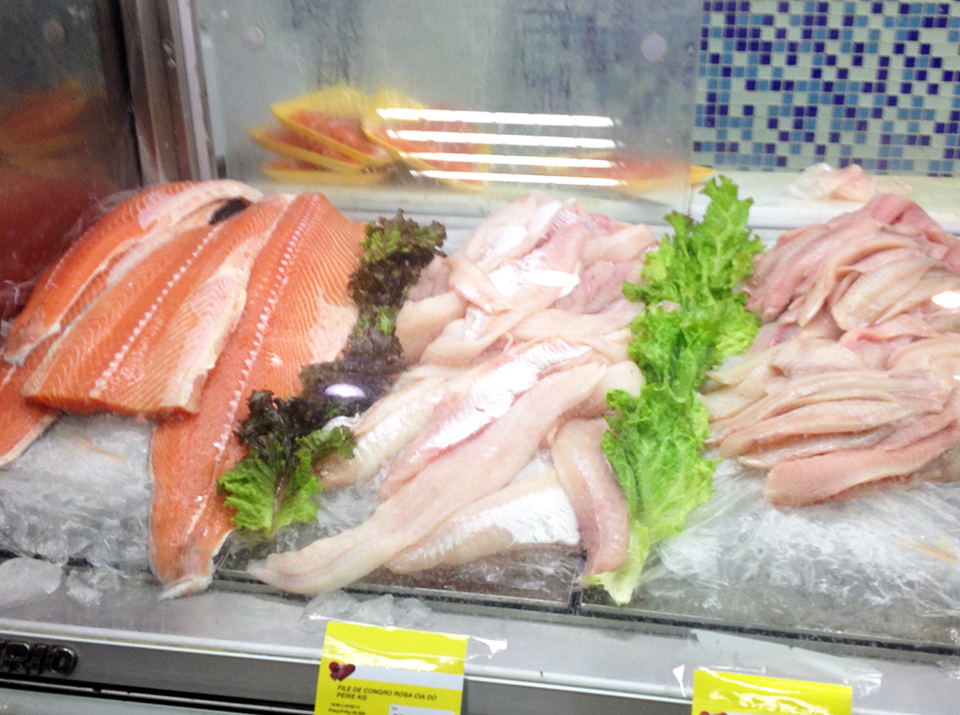More aggressive emission reduction targets needed to reduce mercury levels in tuna, scientists conclude

Mercury levels in tuna appear to be unchanged since 1971 despite efforts to reduce them in the environment, concludes a new study published in Environmental Science & Technology. The scientists warn that more aggressive emission reduction targets are needed to start nudging down tuna mercury levels.
Tuna is one of the most popular seafoods worldwide but can build up high levels of methylmercury from feeding on contaminated prey, like smaller fish or crustaceans. Environmental protection policies have helped reduce mercury pollution from human activities, like burning coal and mining worldwide. However, people can still be exposed to methylmercury, and fetuses and young children are at the highest risk of harm.
An international team of scientists set out to determine whether lower atmospheric emissions resulted in lower concentrations of mercury in the oceans, specifically the methylmercury found in food sources that sit at the top of the food chain, like tuna. The team investigated trends of mercury in tuna over the past 50 years and predicted how different environmental protection policies might affect mercury levels in the oceans and tuna in the future.
The researchers gathered data on total mercury levels from muscle samples of nearly 3,000 tuna caught in the Pacific, Atlantic and Indian Oceans between 1971 and 2022. They focused on tropical tuna types like skipjack, bigeye and yellowfin, which make up 94 percent of global tuna catches. These tuna species usually stay in one area, so the contamination levels in their muscles reflect the pollution in their habitat.
After standardizing the data, the researchers found that mercury levels in tuna stayed mostly the same worldwide from 1971 to 2022, except for a rise in the northwestern Pacific Ocean in the late 1990s. At the same time, airborne mercury decreased globally. The scientists theorized that the stable tuna levels might be due to older “legacy” mercury from deeper ocean layers mixing with shallower waters where tropical tuna swim and feed. This mercury might have been released years or decades earlier and doesn’t yet reflect the effects of recent reductions in air pollution.
The researchers’ mathematical models that simulate three progressively more restrictive environmental policies support this theory. With the most restrictive policy, it would take 10 to 25 years to lower mercury levels in the oceans and it would take even longer for tuna levels to drop. Though their models don’t cover every factor in tuna and ocean life, the team points to the need for global efforts to cut mercury emissions more aggressively. They also stress the importance of ongoing monitoring of mercury in marine life.
Now that you've reached the end of the article ...
… please consider supporting GSA’s mission to advance responsible seafood practices through education, advocacy and third-party assurances. The Advocate aims to document the evolution of responsible seafood practices and share the expansive knowledge of our vast network of contributors.
By becoming a Global Seafood Alliance member, you’re ensuring that all of the pre-competitive work we do through member benefits, resources and events can continue. Individual membership costs just $50 a year.
Not a GSA member? Join us.
Author
-
Responsible Seafood Advocate
[103,114,111,46,100,111,111,102,97,101,115,108,97,98,111,108,103,64,114,111,116,105,100,101]
Tagged With
Related Posts

Intelligence
Public opinions pose barriers for tuna consumption
Safety and sustainability are key concepts affecting consumers’ decisions on tuna consumption. Although the benefits of consumption exceed the potential negative effects, tuna’s harmful attributes tend to negatively impact purchasing in at-risk groups.

Health & Welfare
Mercury scare: Conflicting reports affect U.S. seafood attitudes, consumption
U.S. news media, doctors and even dietitians are warning patients that methylmercury in fish can harm them, their children and their unborn children.

Intelligence
Cooperation across seafood chain can counter mercury reports
Often-referenced but outdated reports have raised concerns over mercury, while in reality, not eating seafood carries greater risk than the minute presence of such chemicals. Cooperation and getting out consistently truthful, positive messages about seafood, the industry will see positive advances.

Fisheries
Atlantic bluefin tuna populations’ genetic links could affect fishery management strategies
A new study uncovers unexpected genetic links across Atlantic bluefin tuna spawning grounds, with implications for fisheries management.



